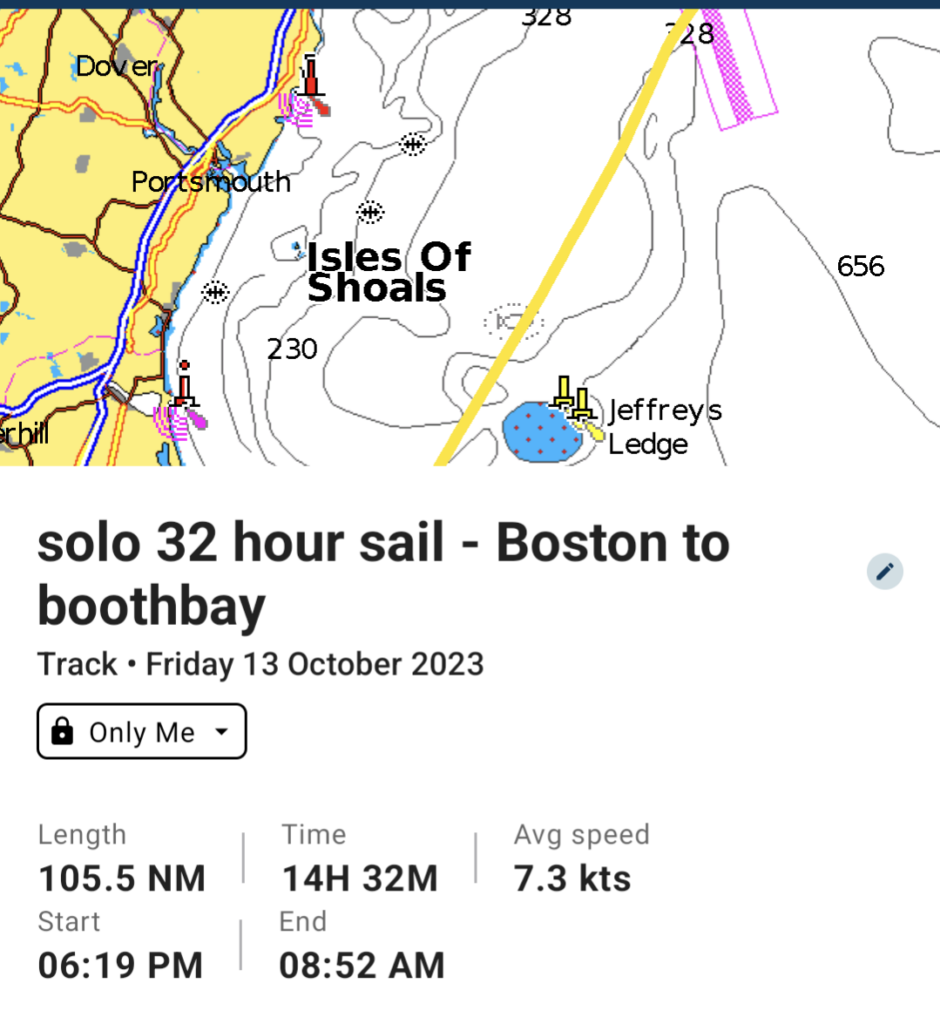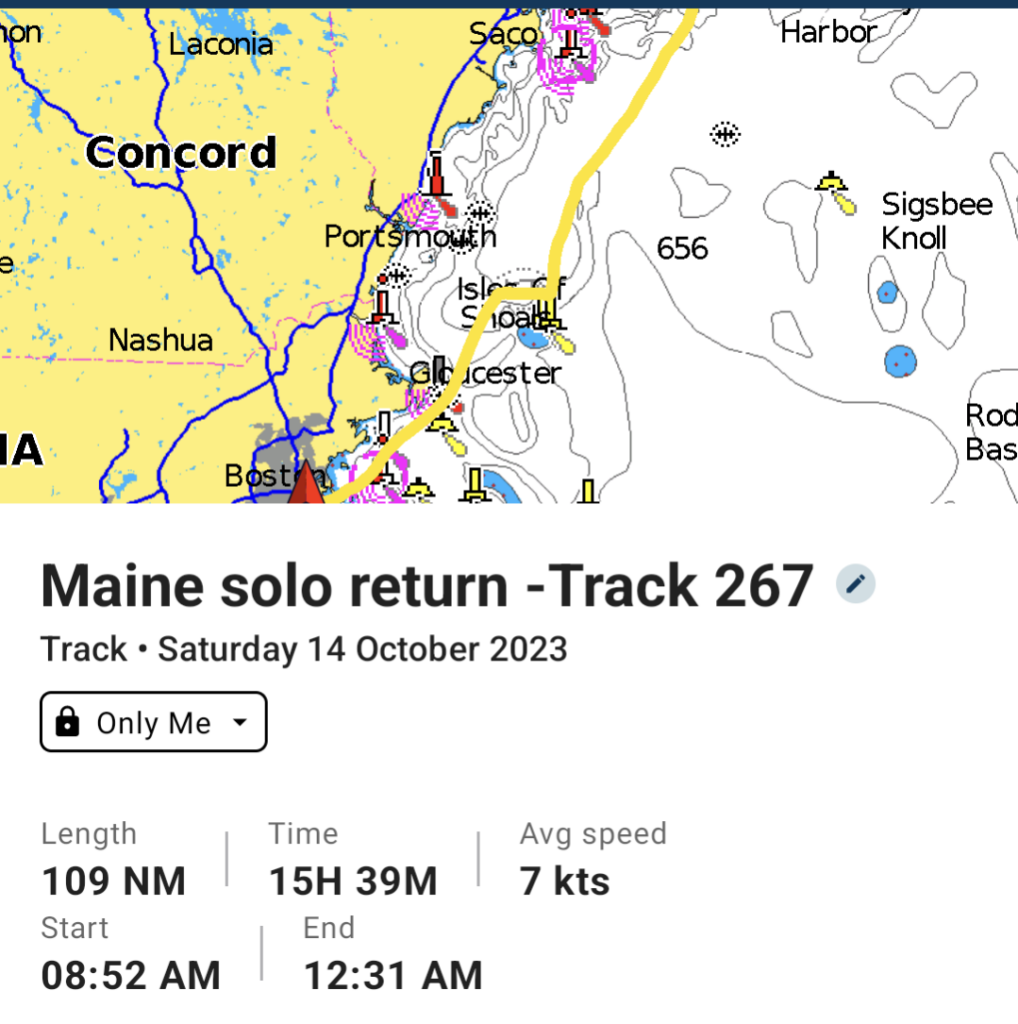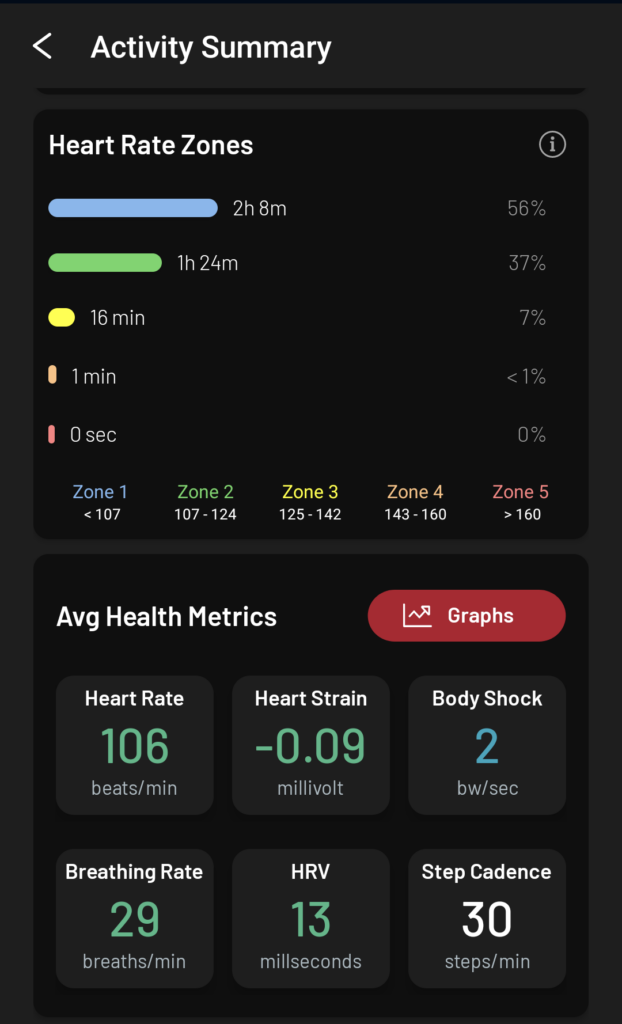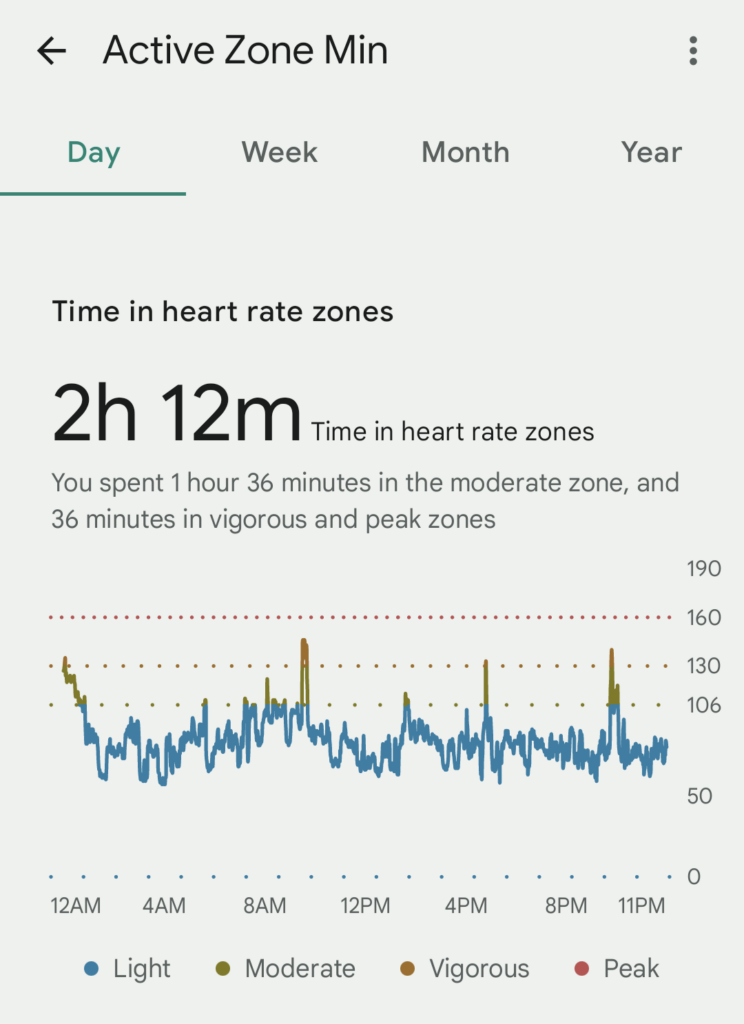While checking the deck before the second sunset of the the sail two things really stuck out:
- The anchor locker hasn’t been that well rinsed for some time; this made me think I probably could have chosen a less extreme weekend for my first experiment with sleeping underway singlehanded
- I felt… clumsy. I made a mental note to research whether sleep deprivation leads to diminished coordination
Back at the dock at low tide when my legs didn’t want to propel me up the ramp I realized I wasn’t uncoordinated; rather my legs were exhausted and offshore they didn’t have the strength to nimbly carry me around the deck as I am accustomed to. In fact I was achey all over and my hamstrings were trying to cramp up.
This was not the kind of tired I was expecting during my first experiment sleeping underway singlehanded. At the end of the sail mentally I was alert and awake but physically I was spent.
I suppose the conditions played a big part in that. A good 12 of the first 24 hours we’re full on: two reefs in the main and at least three in the genoa. It was the most physical sailing of the season and being solo I had to do everything myself.
I shot a video of the instruments after getting past the worst of the compression zone beyond Cape Ann. At this point in the night I had two reefs in the main and three in the genoa. It was the best I could do to show what “full on” looks like when trying to film in the dark:
Having put the two reefs in when approaching Cape Ann and realizing the weird swells were actually bigger waves (from stronger breeze) wrapping around the Cape I felt pretty smart. Rolling three reefs into the genoa after the apparent wind hit 30 knots while close reaching (VMG windward 0f 0) definitely took me down a peg.
Anyway, that’s enough story time, on to the lessons:
Lessons:
The Sail
- Counterpoint, my Bristol 45.5, can really chew up miles; even singlehanded. Which makes sense, she’s been sailing 4x longer than I have and her experience was on full display. The autopilot never seemed overpowered. This is what she was made for. She averaged 7.3 knots SOG for the first 24 hours and 7 knots from Boothbay back to Boston; the second half of which I was beating into a dying breeze.
- I definitely need to shore up the watertightness of the anchor locker
- I needed to re-learn this lesson: fast close reaching can actually be the roughest point of sail. You’re still punching into the waves, faster than you would be if you were close hauled. And you punch through the waves more because you’re not heeled over effectively lowering the freeboard on the windward side where the waves are hitting the boat. The waves are also on the beam enough that the boat can get very rolly even with lots of pressure in the sails.
- When I’m singlehanded it is unlikely I’ll ever use the first reef. I can only imagine some narrow range of wind speed and direction where I can’t reach hull speed with two reefs in and some amount of genoa unrolled but I could with one reef. Going a bit slower in that narrow range seems fine when weighed against the work of switching between one reef and two while singlehanded.


The Rest
- I’m still not sure if I slept. When I’m trying to force myself to go to sleep I often do so by pretending I’m dreaming which makes it difficult to recall if I was actually dreaming when I return to full alertness. I also don’t remember my alarm waking me up – I always woke up a minute or five before it went off from what I recall.
- But I did get rest. Mentally I know what it’s like to power through 24 hours staying up and how groggy and exhausted I feel and this definitely wasn’t that. My mind got rest; I didn’t even find break into the coffee during the 32 hours I was out there.
- I didn’t get enough physical rest. I was physically exhausted when I got back: 30 minute naps (rests?) was enough to rest my mind but it were not enough to give my body time to recover from sailing in those conditions
- I normally don’t consider sailing to be exercise but I think singlehanded in these conditions was an exception. I was tracking with both a fitbit and a ECG chest strap and both recorded a fair bit of exercise


Takeaways
I wanted a tank that sails well and that’s what I got. Turns out if all the controls on your sailing tank are manual it can be pretty exhausting to operate solo for 24+ hours straight.
When I was picking my boat I wanted one that was a physical challenge to sail because if the sailing isn’t at least some exercise it’s tough to get exercise underway or aboard. So again, I got what I wanted and Counterpoint is still showing me what that actually means.
Another thing that occurred to me on my way back is that Counterpoint is good to go. When I’m wearing my boat owner hat I see all the things that could be improved so that she is a better place to live at anchor and at the marina. Improvements that could make Counterpoint easier to sail single handed offshore. But out there with my sailor hat on I was struck by the obvious: Counterpoint is more ready for the rigors of offshore work than most if not all of the boats I’ve taken offshore in the past. As much as the list of projects is always in the back of a boat owner’s mind I’m now resolved to tip the scales in favor of going sailing instead of starting the next project.
But my biggest takeaway is I’m all in on singlehanded passages. It was a great sail and I think the exhaustion added to the feeling of accomplishment that still hasn’t worn off. I’m looking forward to seeing how I manage a 48 hour solo sail. A 72 hour solo sail. And beyond!!
See you out there!
Leave a Reply